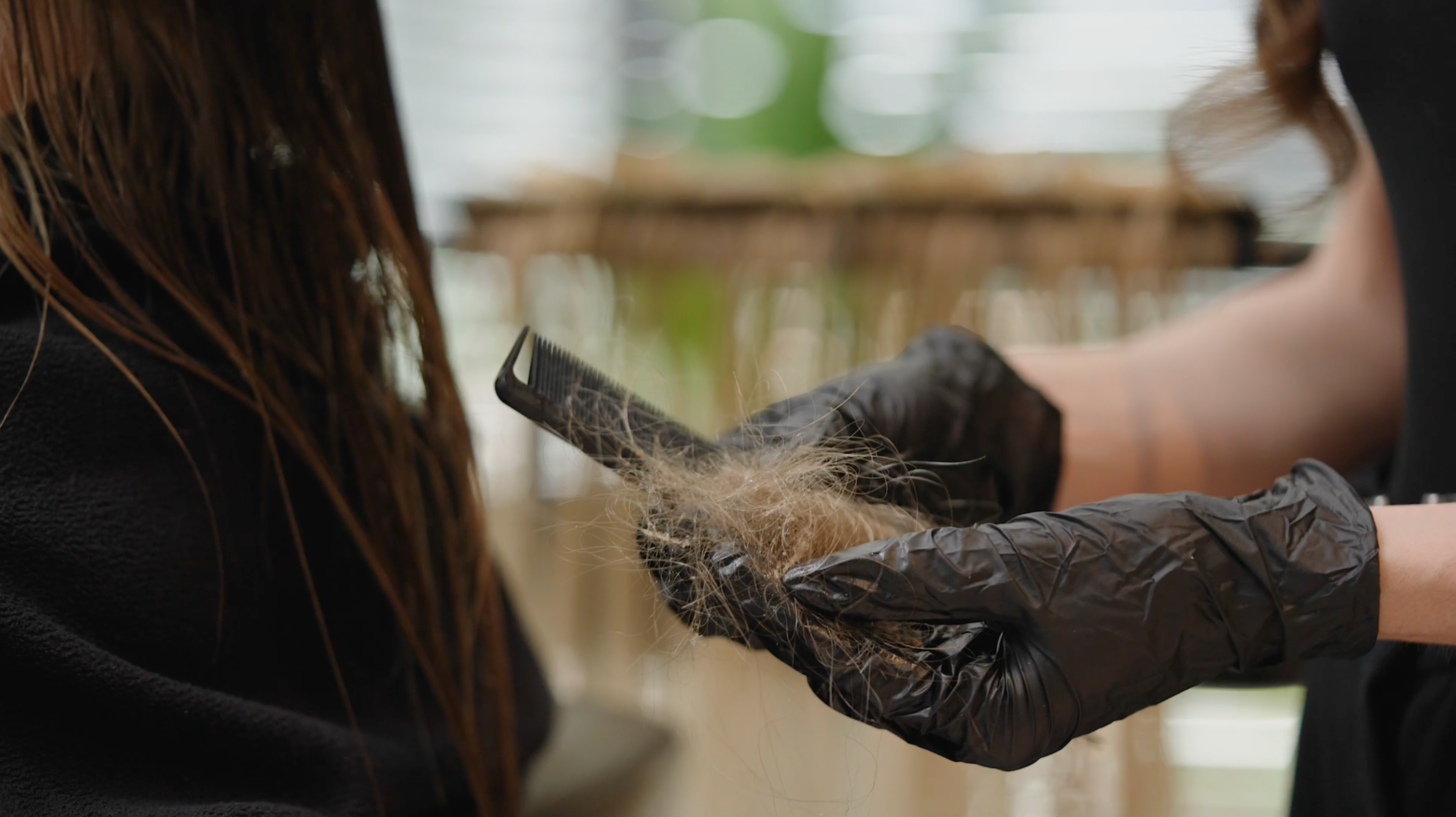Article: Which extensions are suitable for fine/thin hair?

Which extensions are suitable for fine/thin hair?
Extensions for fine hair – which method is best?
Those with fine hair often desire more volume or length. However, not every extension method is suitable for this. Especially with thin hair, it's important that the connection between your own hair and the extensions is as light and gentle as possible . Otherwise, the strands can strain your natural hair or even cause it to break.
Why tape extensions are ideal for fine hair
Tape extensions are one of the most popular methods—and rightly so. They consist of flat, thin adhesive strips that are applied strand by strand to your natural hair. This offers several advantages:
-
Barely noticeable: The flat connections lie gently in the hair without causing pressure points or lumps.
-
Weight is evenly distributed: Unlike methods that apply to specific areas of the hair, the weight of the extensions is distributed over a larger area. This puts less strain on your natural hair.
-
Natural look: Tape extensions fit tightly to the head and fall very naturally – even with fine hair, the transitions are invisible.
-
Gentle removal: With a special remover, the adhesive strips can be removed without leaving any residue and without damaging the hair.
Why tape extensions are gentler in the long run
Another advantage of tape extensions becomes apparent after prolonged wear:
We naturally lose 50–100 hairs a day —when combing our hair, showering, or just going about our daily lives. Normally, these hairs fall out unnoticed. With extensions, however, they get caught in the bonds. This means that over time, fewer and fewer of our own hairs bear the weight of the extensions.
-
Bondings: The bonds are attached to only a few hairs at a time. If some of these hairs fall out, the strain on the remaining ones increases significantly. In the worst case, they can even tear out.
-
Tapes: With these, the weight is distributed over a larger area. Even if some hairs fall out, the strain on your natural hair remains minimal. This is precisely what makes tape extensions particularly gentle, even after several weeks.
Why bondings are problematic for fine hair
Bonded extensions are attached to your natural hair using keratin and heat. This method can work for thick hair, but it carries risks for fine hair:
-
Point load: Since the bondings only cover a few hairs at a time, the tensile force increases significantly when worn for a longer period.
-
Clearly noticeable: The small keratin knots are often noticeable in thin hair and can be a pressure or a nuisance in everyday life.
-
Removal is risky: Bonds are removed with solvents or pliers. This can further weaken the fine, natural hair.
For fine hair, tape extensions are the best option . They're lightweight, barely noticeable, and distribute the weight evenly—even after several weeks. Bonds, on the other hand, can cause significant strain over time and, in the worst case, even tear out your natural hair. If you want full, healthy hair, tape extensions are the safest option.


